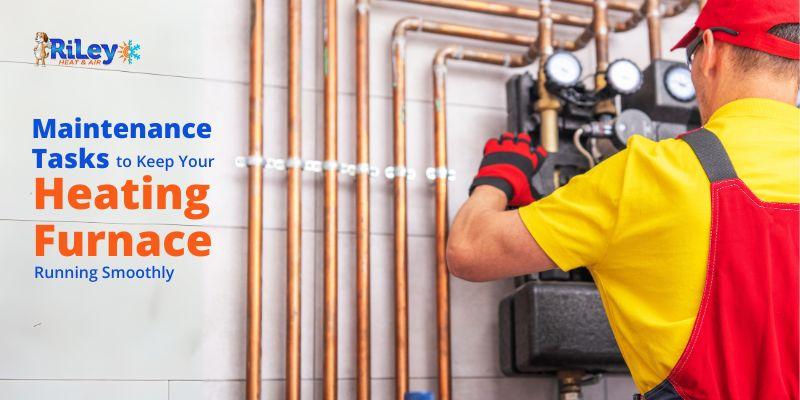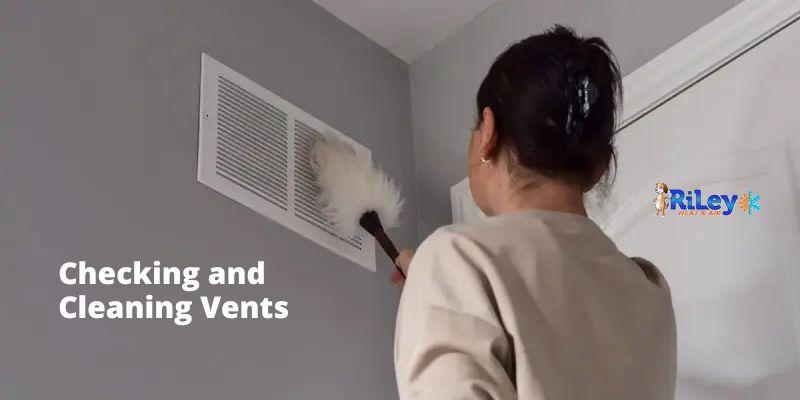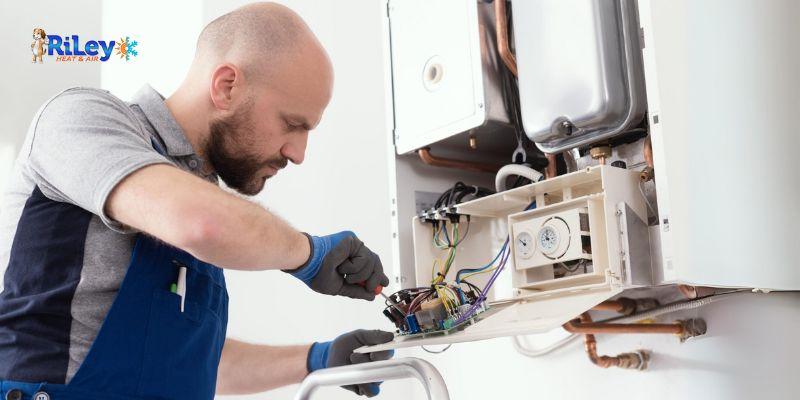
Essential Maintenance Tasks to Keep Your Heating Furnace Running Smoothly and Efficiently
Regular maintenance ensures that your heating furnace operates smoothly and efficiently, keeping your home warm and comfortable during the colder months. By performing routine maintenance tasks, you can prolong the lifespan of your furnace, reduce the risk of breakdowns, and even lower your energy bills. Here are some essential maintenance tasks you should prioritize to keep your heating furnace in optimal condition.
Essential Maintenance Tasks to Keep Your Heating and Air Conditioning System Running Smoothly
1. Cleaning or Replacing Air Filters

One of the simplest yet most crucial maintenance tasks for your heating furnace is regularly cleaning or replacing the air filters. Over time, air filters accumulate dust, dirt, and other particles, reducing airflow and efficiency. Restricted airflow can strain your furnace, leading to increased energy consumption and potential system malfunctions.
Aim to inspect your air filters at least once a month during the heating season and replace them if they appear dirty or clogged. More frequent filter replacements may be necessary in homes with pets or allergy sufferers. Additionally, consider investing in high-efficiency or electrostatic filters to capture smaller particles and improve indoor air quality. Keeping your air filters clean ensures proper airflow, enhances energy efficiency, and maintains optimal furnace performance. You can outsource the cleaning to an HVAC contractor in Washington, DC.
2. Checking and Cleaning Vents and Ductwork
Another important maintenance task is inspecting and cleaning the vents and ductwork connected to your heating furnace. Over time, dust, debris, and even mold can accumulate in the ducts, obstructing airflow and reducing efficiency. Inspect the vents and ductwork regularly for blockages or damage, such as dust buildup, visible debris, or unusual odors.
Use a vacuum cleaner with a long hose attachment, or consider hiring a professional duct cleaning service to remove any accumulated dirt and debris. Additionally, ensure that all vents are open and unobstructed to allow for proper airflow throughout your home. Keeping your vents and ductwork clean and clear can optimize airflow, improve heating efficiency, and prevent potential health hazards associated with poor indoor air quality. Regular heating furnace maintenance ensures reliable performance, energy efficiency, and indoor comfort.
3. Inspecting and Cleaning the Blower Assembly
The blower assembly is critical in distributing heated air throughout your home. Over time, dust and debris can accumulate on the blower blades, motor, and other components, hindering airflow and reducing efficiency. Regularly inspect the blower assembly of your heating and air conditioning system for any signs of dirt or debris buildup.
If you notice dust or debris, carefully clean the blower blades and surrounding components using a soft brush or a damp cloth. Be sure to turn off the power to the furnace before performing any maintenance tasks, and exercise caution to avoid damaging delicate components. Additionally, check the blower motor and bearings for any signs of wear or lubrication issues. Proper lubrication of the blower motor can help reduce friction and prolong its lifespan, ensuring smooth operation and optimal efficiency.
4. Testing and Calibrating Thermostat Settings
Your thermostat controls your heating furnace, regulating indoor temperatures to maintain comfort and efficiency. Testing and calibrating your thermostat settings regularly is essential to ensure accurate temperature control and efficient operation. Start by checking the accuracy of your thermostat using a separate thermometer placed nearby.
If there is a significant discrepancy between the thermostat reading and the thermometer, consider recalibrating the thermostat or replacing it with a newer, more accurate model. Additionally, check the programming and settings on your thermostat to ensure they align with your heating preferences and schedule.
Programmable or smart thermostats offer advanced features such as temperature scheduling and remote access, allowing you to optimize energy usage and save on heating costs. Regularly testing and calibrating your thermostat settings can ensure precise temperature control, improve energy efficiency, and maximize comfort throughout your home.
5. Schedule Professional Maintenance Services

While homeowners can perform many maintenance tasks, scheduling professional maintenance services for your heating furnace at least once a year is essential. A certified HVAC contractor in Washington, DC can thoroughly inspect your furnace, identify potential issues or safety concerns, and perform necessary repairs or adjustments. Professional maintenance services may include checking gas connections, inspecting electrical components, lubricating moving parts, and testing system performance.
By investing in professional maintenance, you can ensure that your heating furnace operates safely, efficiently, and reliably, minimizing the risk of unexpected breakdowns and costly repairs. Additionally, regular professional maintenance can help prolong the lifespan of your furnace and maintain its warranty coverage. Be sure to schedule your annual maintenance appointment before the start of the heating season to ensure your furnace is ready to keep you warm and comfortable when you need it most.
6. Inspecting and Cleaning the Heat Exchanger
The heat exchanger is a crucial component of your furnace, transferring heat from the combustion chamber to the air circulating through your home. Over time, the heat exchanger can develop cracks or corrosion, leading to potential safety hazards such as carbon monoxide leaks. Regular heat exchanger inspection and cleaning are essential to ensure safe and efficient furnace operation. Start by visually inspecting the heat exchanger for any signs of damage, such as cracks, rust, or corrosion.
If you notice any abnormalities, immediately contact a qualified HVAC technician for further inspection and repair. Additionally, clean the exterior surface of the heat exchanger using a soft brush or cloth to remove any dust or debris that may have accumulated. Proper heat exchanger maintenance can help prevent safety hazards and ensure efficient heat transfer, keeping your home warm and comfortable throughout the heating season.
7. Checking and Adjusting Gas Pressure
Proper gas pressure is essential for your heating furnace's efficient and reliable operation. Too much or too little gas pressure can lead to inefficient combustion, increased energy consumption, and potential safety hazards. Regularly check the gas pressure using a manometer and adjust it as needed to ensure it falls within the manufacturer's recommended range. If you need help with how to check or adjust gas pressure, consult qualified HVAC companies in Washington, DC.
Additionally, inspect the gas connections for any signs of leaks or damage, such as hissing sounds, odors, or visible corrosion. Address any issues promptly to prevent gas leaks and ensure safe furnace operation. Maintaining proper gas pressure and inspecting gas connections regularly can optimize furnace performance, improve energy efficiency, and minimize the risk of safety hazards associated with gas leaks or combustion problems.
COMMENTS
LEAVE A COMMENT







Learning about the essential maintenance tasks for keeping my heating furnace running smoothly and efficiently is a game-changer! In Washington, DC, where winters can be unforgiving, ensuring our furnaces are in top shape is a must. From regular filter changes to professional inspections, these tasks are the backbone of a warm and comfortable home. Thank you for the reminders to stay ahead of the cold weather!